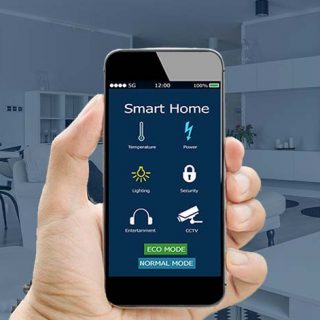Enterprise IT organizations need to continuously roll out innovative new features into their platform-as-a-service offering with just the right features to achieve faster time to market with no defects and low cost. DevOps is an approach that helps you achieve speed and quality by enabling collaboration between lines of business, development team, testers and IT operations team with shared and integrated toolsets throughout development, integration and staging phases of an application delivery. To add on, DevOps today are complementing with the agile methodologies, lean practices in the context of a system-oriented approach.
At VOLANSYS, we are helping many global IT enterprises to establish DevOps Processes by leveraging right stack of tools and technologies.

How to Implement DevOps?
- DevOps as a Culture
DevOps is not a technology rather a culture itself, an organization can gain its fruits when DevOps is started being absorbed as organizations culture, to implement DevOps culture it needs to gell and collaborate well with the team participating in Development and operations of their product. Similar to Agile, DevOps believes in continuous collaboration, deployments, testing, monitoring and feedback that can be achieved by involving OPS team in the early stage of development and with their active participation until the production releases.
- Automate Everywhere
The basic fundamental of DevOps is to implement the automation in all the stages delivery, right from the code verification to deployment, which includes code integration, builds, testing, deploying, verifying the deployed builds. This automation accelerates all the stages of software delivery so that developers get feedback and impact of their changes fast which help to speed up an overall time to market.
- Continuous Code Integration:
Continuous Integration (CI) addresses the developer group in the DevOps lifecycle. Here the key focus is to have a seamless error-free builds with best techniques & standards of version controls that are adopted and then picked up for the deployment in the specified environments. The challenge is selecting the right tool set that works for your needs. Hudson, Jenkins, Bamboo, are some of the tools used for continuous integration.
Code Integration Tools: Git, SVN, Hudson, Jenkins, Bamboo
- Continuous Code Testing:
Testing is the another important part of development lifecycle that certifies the quality of the product that is delivered to the end customer. DevOps emphasis on automating all the types and phases of testing. The goal of continuous testing is to provide fast and continuous feedback about the level of business risk in the latest build which is used to determine if the software is ready to progress through the delivery pipeline at any given time. Tools like Maven, Selenium, Cucumber, and Robot Framework are widely used tools for testing.
Code Testing Tools: Python Framework, Selenium, Maven, Robot Framework
- Continuous Orchestration:
Applications are typically multi-tier in their architecture, which means that each application has dependencies which need to be managed properly. Hence, containers are created for fast and reliable deployment of application components on any underlying infrastructure. Orchestration will take care of the timing of container creation by order of dependency, as well as all of the necessary configurations to allow the containers to communicate and pass the required runtime properties to one another.
Orchestration Tools: Docker, Kubernetes
- Dynamic Configuration and Deployment:
Configuration management tool helps you to keep environments consistent throughout the software development process, from the developer’s laptop until production across all the stages of the delivery pipeline. The commonly used tools are Chef, Ansible, Vagrant, Puppet.
Continuous deployment is the core of DevOps. Continuous deployment follows continuous delivery and deploys automatically all changes that passed the automated tests to production. Some of the popular tools for deployment are Capistrano, Electric Flow, Octopus Deploy, Continuum.
Dynamic Deployment Tools: Ansible, Chef, Puppet, Vagrant
- Continuous Monitoring:
Continuous monitoring of entire DevOps lifecycle will ensure development and operations teams collaborate to optimize the user experience every step of the way. Monitoring enables to collect and analyze data is testing environments. Tools like Librato, Nagios, Zabbix, Sensu, Logstash generates the data for the team which shows whether the performance is improved or became worse and helps to take corrective measures for improving the performance.
Monitoring Tools: Nagios, Sensu, Icinga2, Librato
REAL WORLD IMPLEMENTATION:
A leading Cloud-based IoT Platform-as-a-Service provider wanted to setup DevOps processes to automate code integration, testing, and deployment with an aim to reduce release cycle and focus more on developing newer innovative features.
Solution Overview:
Volansys DevOps experts integrated right mix of DevOps tools for continuous release management, infrastructure provisioning, orchestration, monitoring, containerization, virtualization and automation along with real-world implementation.
- Continuous integration and testing using Jenkins & Robot framework
- Making containers and Deploying using Docker
- Deploying dynamic configurations using Vagrant & Ansible on the cloud
- Continuous monitoring with Librato
- Continuous collaboration using Slack
VOLANSYS DevOps Services helped a client with:
- Reduced build & releases cycle time from monthly to weekly
- Reduced the production deployment time from 24 hours to 2 hours
- Competitive advantage over other IoT platforms by empowering demanding customers faster
- Improved quality of deployment with automated testing
- Real-time Transparency among the development, testing and deployment team









